There's nothing quite like a steaming bowl of beef stew on a chilly evening. This classic beef stew recipe brings together tender chunks of meat, hearty vegetables, and a rich, savory gravy that will have everyone asking for seconds. Whether you're cooking for your family on a busy weeknight or preparing a cozy sunday dinner, this homemade beef stew delivers maximum flavor with minimal fuss. The best part? This beef stew practically cooks itself once you've got everything in the pot, making it perfect for both beginners and experienced home cooks.
My grandmother used to say that a good beef stew is the mark of a great cook, and after years of perfecting this recipe, I finally understand what she meant. This beef stew recipe combines old fashioned techniques with modern shortcuts to give you the most tender beef stew you've ever tasted, with a thick, flavorful gravy that's worth every minute of cooking time.

Background & Why This Recipe Stands Out
Beef stew has been warming hearts and homes for centuries, passed down through generations as the ultimate comfort food. What makes this beef stew recipe special is the combination of proper browning techniques, the right cut of meat, and a carefully balanced mix of herbs and seasonings that create layers of flavor. Unlike quick versions that sacrifice taste for speed, this traditional beef stew allows the ingredients to slowly meld together, resulting in fork-tender meat and vegetables that soak up all that delicious gravy.
This hearty beef stew works beautifully for meal prep, tastes even better the next day, and freezes wonderfully for those nights when you need a home-cooked meal but don't have time to cook. The rich beef stew gravy, infused with tomato paste, Worcestershire sauce, and herbs, creates a depth of flavor that turns a simple beef stew into something truly special. Plus, with easy substitutions and variations, you can adapt this beef stew to fit any dietary need or taste preference.
Jump to:
Ingredients
For the Stew Base
- Beef stew meat (chuck roast cut into 1.5-inch cubes)
- Olive oil or vegetable oil
- Yellow onion, diced
- Garlic, minced
- All-purpose flour (or cornstarch for gluten-free)
- Beef broth (low-sodium preferred)
- Tomato paste
- Worcestershire sauce
- Bay leaves
For the Vegetables
- Carrots, peeled and cut into 1-inch pieces
- Baby potatoes, halved (or regular potatoes cut into chunks)
- Celery stalks, chopped
- Mushrooms, quartered (optional)
- Frozen peas (added at the end)
Seasonings & Herbs
- Dried thyme
- Dried rosemary
- Paprika
- Salt and black pepper to taste
- Fresh parsley for garnish
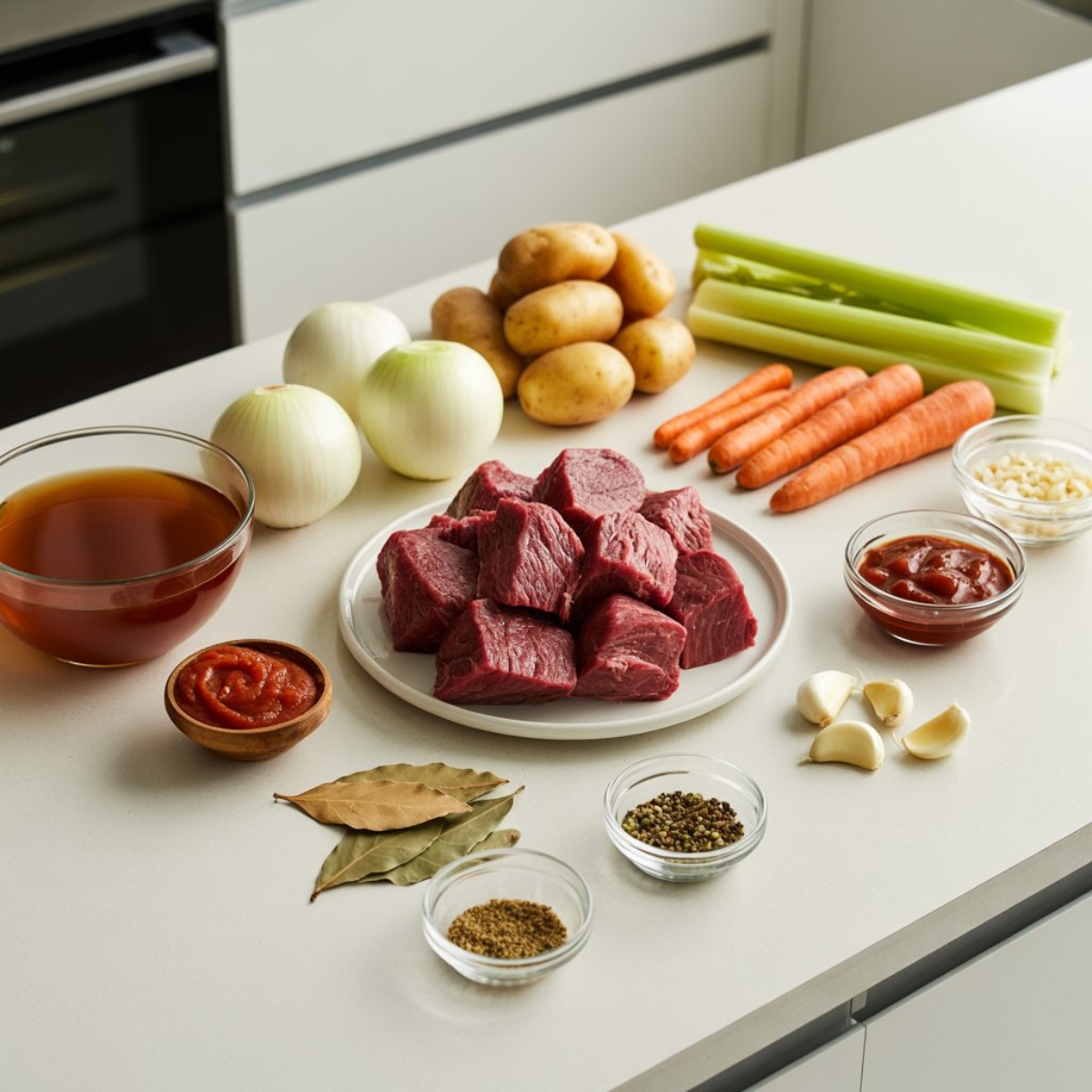
See recipe card for quantities.
Instructions
Step 1: Brown the Meat for Maximum Flavor
- Pat the beef stew meat dry with paper towels; this helps achieve a better brown crust
- Season generously with salt and pepper on all sides
- Heat 2 tablespoons of oil in a large Dutch oven or heavy pot over medium-high heat
- Working in batches to avoid crowding, brown the meat on all sides (about 3-4 minutes per batch)
- Transfer browned meat to a plate and set aside
- Don't skip this step; browning creates the foundation of flavor for your entire beef stew
Step 2: Build the Flavor Base
- Reduce heat to medium and add remaining tablespoon of oil to the pot
- Add diced onions and cook until softened and translucent (about 5 minutes)
- Stir in minced garlic and cook for 1 minute until fragrant
- Sprinkle flour over the onions and garlic, stirring constantly for 2 minutes to cook out the raw flour taste
- This creates a roux that will thicken your beef stew into that perfect, rich consistency
Step 3: Add Liquids and Simmer
- Slowly pour in the beef broth and red wine, stirring to scrape up all the browned bits from the bottom of the pot
- Mix in tomato paste, Worcestershire sauce, bay leaves, thyme, rosemary, and paprika
- Return the browned beef and any accumulated juices to the pot
- Bring to a boil, then reduce heat to low and cover
- Simmer for 1 hour, stirring occasionally
- The meat should start becoming tender but won't be fully done yet
Step 4: Add Vegetables and Finish Cooking
- Add carrots, potatoes, celery, and mushrooms to the pot
- Stir gently to combine with the beef stew
- Continue simmering covered for another 45-60 minutes until vegetables are tender and meat is fork-tender
- In the last 5 minutes, stir in frozen peas
- Remove bay leaves and adjust seasoning with salt and pepper
- If your stew is too thin, simmer uncovered for 10-15 minutes to reduce and thicken
- Garnish with fresh parsley before serving
Expert Cooking Tips
Choosing the Right Cut Chuck roast is your best friend when making beef stew. This cut has the perfect amount of marbling and connective tissue that breaks down during slow cooking, resulting in incredibly tender meat. Avoid lean cuts like sirloin; they'll turn tough and dry. Cut your own chunks from a whole chuck roast for the best results, aiming for 1.5-inch cubes so they don't fall apart during cooking.
The Secret to Tender Meat Temperature control makes all the difference in a tender beef stew. Keep your simmer low and steady; bubbles should barely break the surface. High heat will make the meat tough and stringy no matter how long you cook it. Low and slow is the golden rule here.
Creating That Perfect Thick Gravy
- The flour roux method creates a naturally thick beef stew without artificial thickeners
- For an even richer gravy, add an extra tablespoon of tomato paste
- If your stew is too thin at the end, make a slurry with 2 tablespoons cornstarch mixed with 2 tablespoons cold water, then stir it in
- Let it simmer for 5 more minutes to activate the cornstarch
Wine Selection Matters A dry red wine like Cabernet Sauvignon or Merlot adds depth to your beef stew. Don't use cooking wine; use something you'd actually drink. The alcohol cooks off, leaving behind rich, complex flavors that balance the savory elements.
Vegetable Timing Root vegetables like carrots and potatoes need the full cooking time, but more delicate vegetables should be added later. Mushrooms can go in with the root vegetables, but peas should wait until the last 5 minutes to stay bright and tender.
Recipe Variations & Substitutions
- Slow Cooker Beef Stew Adaptation After browning the meat and making the flavor base on the stovetop, transfer everything to your slow cooker. Cook on low for 7-8 hours or high for 4-5 hours. Add vegetables during the last 2-3 hours of cooking for the slow cooker method.
- Instant Pot Beef Stew Version Use the sauté function to brown meat and vegetables, then add liquids and cook on high pressure for 35 minutes with natural release. This cuts your cooking time significantly while still delivering a delicious beef stew.
- Gluten-Free Option Swap all-purpose flour with cornstarch or a gluten-free flour blend. You can also skip the flour entirely and thicken with mashed potatoes or a cornstarch slurry at the end.
- Keto Beef Stew Replace potatoes with turnips, radishes, or cauliflower florets. Skip the flour and use xanthan gum as a thickener. This creates a hearty beef stew that fits perfectly into low-carb meal plans.
Vegetable Swaps
- Use sweet potatoes instead of regular potatoes for extra nutrition
- Add parsnips or turnips for different flavors
- Include green beans, bell peppers, or zucchini
- Try butternut squash for a slightly sweet twist
Protein Alternatives While this is a classic beef stew recipe, you can adapt it for lamb, venison, or even pork shoulder using the same technique.
Equipment Recommendations
A heavy-bottomed Dutch oven is ideal for making beef stew because it distributes heat evenly and goes from stovetop to oven seamlessly. The 6-7 quart size works perfectly for this recipe. If you don't have a Dutch oven, a large, heavy pot with a tight-fitting lid works well too.
For slow cooker beef stew, a 6-quart slow cooker gives you enough room for all the ingredients without overcrowding. Make sure it has a removable ceramic insert for easy cleaning.
An Instant Pot or pressure cooker speeds up the cooking process dramatically while still delivering tender results. The 6 or 8-quart models work best for this beef stew recipe.
A good sharp knife makes cutting the beef stew meat into uniform cubes much easier, which helps everything cook evenly. A sturdy wooden spoon for stirring and a ladle for serving round out your essential tools.
Storage & Meal Prep Tips
- Refrigerator Storage Store leftover beef stew in airtight containers in the refrigerator for up to 4 days. The flavors actually deepen and improve overnight, making this an excellent make-ahead meal. Reheat gently on the stovetop over medium-low heat, adding a splash of broth if needed to thin the gravy.
- Freezer Storage This beef stew freezes beautifully for up to 3 months. Let it cool completely before transferring to freezer-safe containers, leaving an inch of space at the top for expansion. For best results, freeze in individual portions for easy reheating. Thaw overnight in the refrigerator before reheating.
- Meal Prep Strategy Make a double batch of this hearty beef stew on Sunday and portion it into containers for easy weeknight dinners. It reheats perfectly in the microwave (2-3 minutes on high, stirring halfway) or on the stovetop (5-7 minutes over medium heat).
- Avoiding Mushy Vegetables If meal prepping, slightly undercook the vegetables so they don't turn to mush when reheated. They'll finish cooking during the reheating process.
Grandma's Secret That Changed Everything
Want to know what really takes beef stew from good to absolutely incredible? Here's the secret my grandmother taught me: add a small piece of dark chocolate (about half an ounce) to your beef stew during the last 30 minutes of cooking. I know it sounds strange, but the chocolate adds an unbelievable depth and richness to the gravy without making it taste sweet. It's a classic French technique that creates that restaurant-quality flavor you can't quite put your finger on.
Another game-changing tip is to let your beef stew rest for 10-15 minutes before serving. Just like a good steak, this resting time allows the flavors to settle and the gravy to thicken slightly. The difference in taste and texture is remarkable, and it gives you time to prepare any side dishes or set the table.
FAQ
What is the secret to a good beef stew?
The secret to a good beef stew is browning the meat properly before adding liquids. This creates a flavorful crust that adds depth to the entire dish. Also, using the right cut of meat (chuck roast), cooking low and slow, and not rushing the process makes all the difference between a mediocre and an amazing beef stew.
What are the best ingredients for a stew?
The best ingredients for a stew include quality beef stew meat, aromatic vegetables (onions and garlic), root vegetables like carrots and potatoes, beef broth, tomato paste, and Worcestershire sauce. Fresh herbs like thyme and rosemary, along with bay leaves, create layers of flavor that make your beef stew truly special.
How to cook perfect beef stew?
To cook perfect beef stew, start by browning the meat in batches, then build a flavor base with onions and garlic. Add flour to create a roux, pour in liquids, and simmer on low heat for about 1 hour before adding vegetables. Continue cooking until everything is tender. The key is maintaining a gentle simmer and giving the beef stew enough time to develop rich, complex flavors.
What gives beef stew the best flavor?
To cook perfect beef stew, start by browning the meat in batches, then build a flavor base with onions and garlic. Add flour to create a roux, pour in liquids, and simmer on low heat for about 1 hour before adding vegetables. Continue cooking until everything is tender. The key is maintaining a gentle simmer and giving therecipe enough time to develop rich, complex flavors.
Warm Hearts with This Timeless Classic
This classic recipe proves that the best comfort food doesn't have to be complicated. With simple ingredients, proper technique, and a little patience, you can create a hearty beef stew that rivals anything from a fancy restaurant. The tender meat, perfectly cooked vegetables, and rich gravy come together in a one-pot meal that's perfect for feeding a crowd or meal prepping for the week ahead.
Once you've mastered this traditional Recipe, try experimenting with our Autumn Harvest Beef Stew Recipe for a seasonal twist with butternut squash and apples, or explore different flavor profiles with our Moroccan Lamb Stew Recipe featuring warm spices and dried fruits. Both recipes use similar techniques but take you on completely different culinary journeys. Don't forget to share your beef stew success stories in the comments below, and let us know which variations become your family favorites!
With love from my kitchen to yours,
Kaitlyn Reed
Related
Looking for other recipes like this? Try these:
Pairing
These are my favorite dishes to serve with this beef stew recipe:

Classic Beef Stew Recipe
Equipment
- Dutch oven (6–7 quart) Ideal for even heat distribution
- Wooden Spoon For stirring and scraping browned bits
- Chef’s knife For cutting beef into even cubes
- Cutting board Sturdy surface for prepping ingredients
- Ladle For serving the stew
Ingredients
- 2.5 pounds beef stew meat (chuck roast) cut into 1.5-inch cubes
- 3 tablespoon olive oil divided
- 1 large yellow onion diced
- 4 cloves garlic minced
- 3 tablespoon all-purpose flour or cornstarch for gluten-free
- 4 cups beef broth low-sodium preferred
- 1 cup red wine or extra broth if avoiding alcohol
- 2 tablespoon tomato paste adds richness
- 2 tablespoon Worcestershire sauce enhances flavor
- 2 bay leaves remove before serving
- 4 large carrots peeled and cut into chunks
- 1 pound baby potatoes halved
- 3 stalks celery chopped
- 8 ounces mushrooms optional, quartered
- 1 cup frozen peas add at the end
- 2 teaspoon dried thyme
- 1 teaspoon dried rosemary
- 1 teaspoon paprika adds color and depth
- 0.5 teaspoon black pepper or to taste
- 1 teaspoon salt or to taste
- 2 tablespoon fresh parsley chopped for garnish
Instructions
- Pat beef dry, season with salt and pepper, and brown in oil over medium-high heat in batches. Set aside.
- Sauté onion in remaining oil until softened, add garlic, then stir in flour to make a roux.
- Slowly pour in broth and wine, scraping up browned bits. Add tomato paste, Worcestershire sauce, herbs, and spices.
- Return beef to pot, bring to a boil, then cover and simmer on low for 1 hour.
- Add carrots, potatoes, celery, and mushrooms. Continue simmering 45–60 minutes until tender.
- Stir in peas during the last 5 minutes. Remove bay leaves and garnish with parsley.
- Let stew rest 10–15 minutes before serving for best flavor and texture.


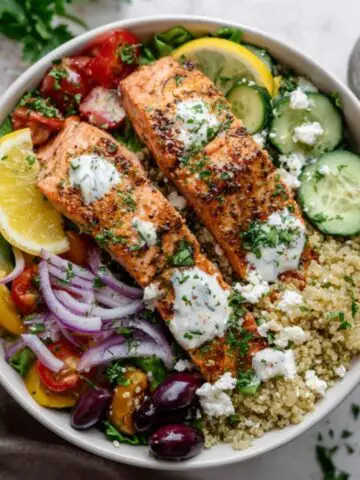


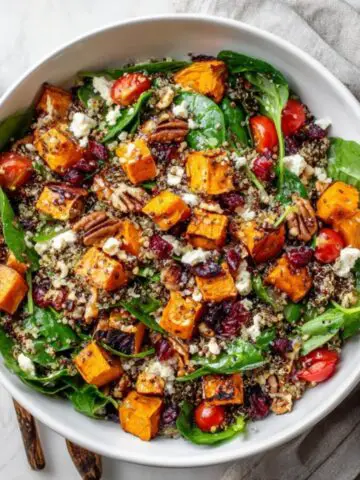

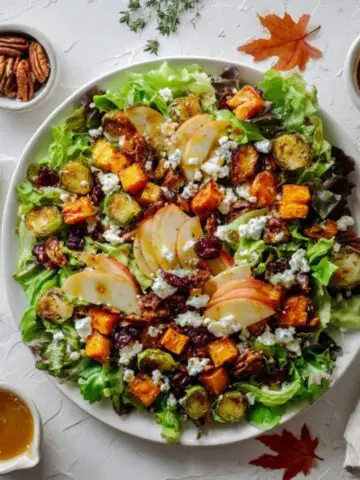

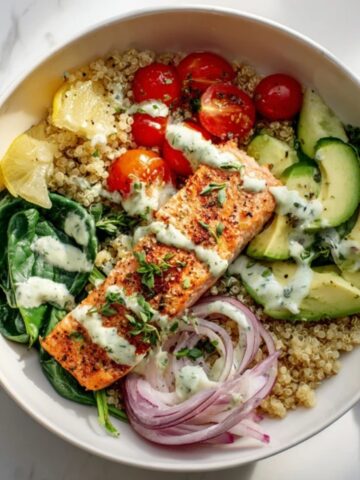
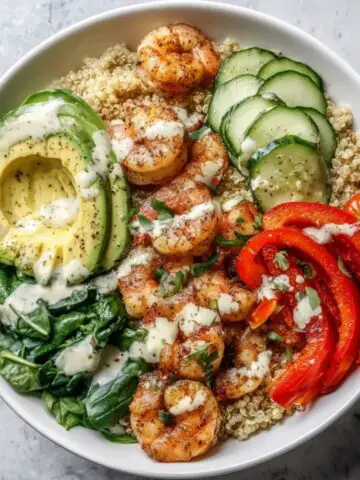
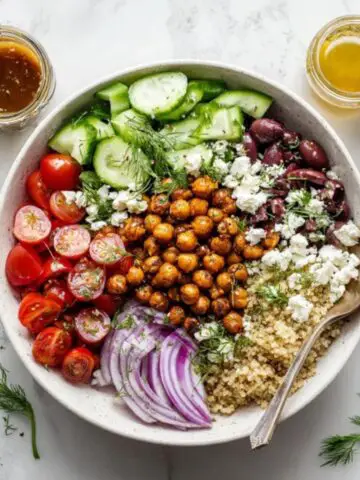

Leave a Reply